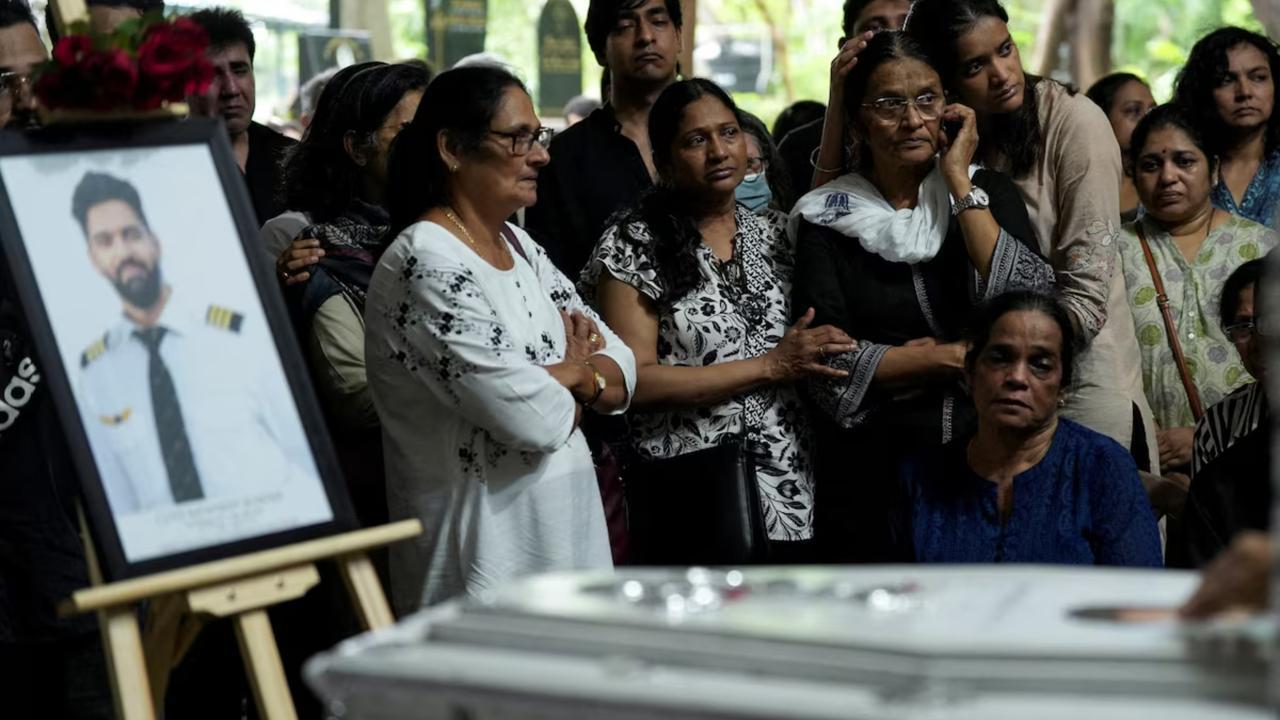
Post by : Amit
Photo : Reuters
Who Were the Men in the Cockpit?
As investigators sift through the wreckage of the Air India Express jet that crashed on July 17, public attention has now shifted to the two men who were at the controls. Captain Prithvi Raj Singh and First Officer Faheem Qureshi—both seasoned professionals—were in charge of Flight IX452, which tragically veered off the runway during its final approach in heavy rain, resulting in 17 fatalities and dozens of injuries.
While black box analysis and ATC transcripts will eventually provide hard data on what went wrong, a deeper understanding of the pilots’ backgrounds, training, and decision-making is becoming central to the investigation. The incident has once again put a spotlight on the high-stakes responsibilities that pilots shoulder every day—and how even experienced flight crews can face insurmountable odds under the wrong conditions.
Captain Prithvi Raj Singh: A Decorated Career
Captain Prithvi Raj Singh, 59, was widely respected within Indian aviation circles. With over 18,000 flight hours logged, he had more than two decades of experience flying both international and domestic routes. Sources within Air India Express described him as “a textbook pilot”—someone who adhered closely to protocols, known for his methodical flying style and calm demeanor under pressure.
He began his career with the Indian Air Force before transitioning to commercial aviation in the mid-1990s. His military background earned him high marks during simulator drills and emergency response scenarios. In fact, Singh had been part of a safety audit committee within the airline just two years ago, focused specifically on monsoon runway risks.
Colleagues describe him as deeply committed to safety, often advising junior pilots during simulator sessions. The fact that he was at the helm during such a disastrous incident has deeply unsettled his peers.
First Officer Faheem Qureshi: Young, Bright, and Rising
First Officer Faheem Qureshi, 32, was seen as one of Air India Express’s most promising young pilots. Though younger than his captain, Qureshi had racked up more than 4,000 flying hours, with more than 1,500 of those on the Boeing 737 aircraft type used in Flight IX452. He had recently completed advanced simulator training that focused on adverse weather landings.
According to his flight school mentors in Bengaluru, Qureshi stood out for his technical precision and rapid problem-solving skills. In cockpit crew assessments, he consistently scored in the top percentile, particularly in handling go-around procedures and wind shear conditions—skills that tragically came into play during the final moments of the flight.
Friends and fellow aviators described him as “disciplined to a fault,” and some recalled how he turned down lucrative overseas job offers to stay closer to family in India. His untimely death has left many in the pilot community shaken.
A Difficult Descent: What We Know So Far
Flight IX452 was operating a scheduled service from Dubai to Kochi when it was diverted to Kozhikode due to poor weather. The flight landed amid intense monsoon rain and low visibility, attempting a notoriously difficult runway that has seen incidents before.
According to preliminary data released by the Directorate General of Civil Aviation (DGCA), the aircraft attempted a landing on the table-top runway but skidded beyond the overshoot area. It then broke into two, killing both pilots and 15 passengers.
ATC audio suggests the crew was advised of crosswinds and wet runway conditions. The pilots initially considered a go-around but then committed to a second landing attempt. Whether that decision was made under procedural stress, fuel pressure, or weather misjudgment is part of the ongoing inquiry.
Investigators Focus on Training, Protocols
With both pilots deceased, the investigation now depends heavily on black box data, cockpit voice recordings, and ground radar logs. But authorities are also closely examining crew training records, simulator performance logs, and previous flight hours—seeking to determine whether fatigue, weather misinterpretation, or procedural errors contributed to the crash.
A DGCA official, speaking anonymously, confirmed that investigators are not ruling out Controlled Flight Into Terrain (CFIT), a phenomenon where a technically airworthy aircraft is inadvertently flown into the ground. “In poor visibility and high-stress situations, even experienced crews can miss visual cues,” he noted.
In this case, both pilots were said to be within regulated duty limits. No distress calls were made before the crash. These details have raised further questions about whether Air India’s risk assessment protocols for monsoon operations are truly sufficient.
Industry Reactions: Shock, Mourning, and Reflection
News of the pilots’ deaths has sent shockwaves through India’s aviation sector. The Indian Commercial Pilots’ Association (ICPA) issued a statement calling Captain Singh and First Officer Qureshi “heroes who served with honor.” Candlelight vigils were held by Air India staff in Mumbai, Kochi, and Hyderabad.
Captain Harish Malhotra, a senior training captain with over 25 years in the industry, remarked, “Both these men were known for their competence. That’s what makes this so heartbreaking. If it could happen to them, it could happen to any one of us.”
Some airline unions are calling for a thorough reassessment of how flight schedules are managed during monsoon months, particularly in southern India where weather unpredictability is common and alternate airports are few.
A Growing Pattern of Weather-Related Risks
This incident adds to a worrying list of runway excursions in India in recent years, many occurring during the rainy season. Table-top runways—built on elevated terrain with steep drops at either end—offer less margin for error, especially during heavy rainfall.
Experts have long warned that such runways require stricter operational standards and more conservative landing thresholds. “Landing should be automatically ruled out when braking action reports are poor, but commercial pressures often cloud judgment,” said an aviation analyst from the International Federation of Air Line Pilots’ Associations (IFALPA).
Whether IX452 should have diverted further or waited out the weather remains a central question. What’s becoming clear is that despite their professionalism, even highly trained pilots like Singh and Qureshi are vulnerable in flawed systems.
Honoring Their Legacy with Reform
In the aftermath of this tragedy, it is essential that the industry not only mourns the loss of two dedicated aviators but also acts on what their deaths expose. Both Captain Prithvi Raj Singh and First Officer Faheem Qureshi exemplified skill, discipline, and professionalism. Their final flight must now become a catalyst for change—in training, regulation, weather protocol, and pilot support systems.
The cockpit is often called the safest place in the sky, but this week’s crash reminds us that it is also the most fragile. If we are to honor the memory of the men who died doing their duty, we must ensure that no future pilot is forced to make impossible decisions in avoidable conditions.
Air India, Aviation










Bengaluru-Mumbai Superfast Train Approved After 30-Year Wait
Railways approves new superfast train connecting Bengaluru and Mumbai, ending a 30-year demand, easi

Canada Post Workers Strike Halts Nationwide Mail and Parcel Services
Canada Post halts operations as CUPW strike disrupts mail and parcel delivery nationwide amid disput

PM Modi Launches BSNL ‘Swadeshi’ 4G Network, 97,500 Towers Built
India enters global telecom league as PM Modi inaugurates BSNL’s indigenous 4G, connecting 26,700 vi

India’s Iconic MiG‑21 Takes Final Flight After Six Decades of Service
After 60 years India retires its MiG‑21 fighter jet, a legendary yet controversial warplane marking

Hindustan Zinc unveils AI hotspot monitoring at Debari smelter
Hindustan Zinc launches AI-powered Switchyard Hotspot Monitoring at Debari smelter to cut outages bo

Chinese experts worked inside sanctioned Russian drone plant
Chinese drone specialists visited IEMZ Kupol supplying parts and drones via intermediaries, deepenin